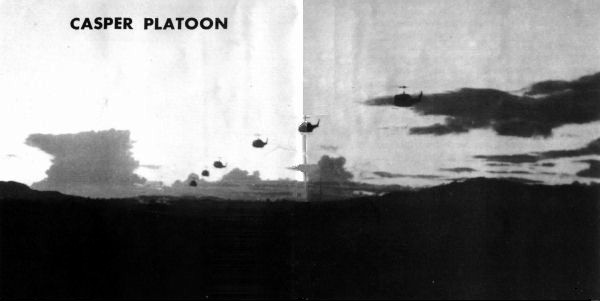Casper aviation platoon Casper Platoon Story

Casper Platoon

This site was last updated: 2/15/15
Reprint from: Sky Soldier Magazine
173d Airborne Brigade Support, March 1968

Casper has conducted 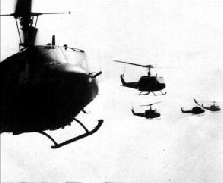 every type of helicopter mission required in Vietnam, but its main objective is to provide Command and Control aircraft for the 173d Airborne Brigade. This is the 173d 'Casper' Aviation Platoon, which has been with the Sky Soldiers since their arrival in country in May 1965.
every type of helicopter mission required in Vietnam, but its main objective is to provide Command and Control aircraft for the 173d Airborne Brigade. This is the 173d 'Casper' Aviation Platoon, which has been with the Sky Soldiers since their arrival in country in May 1965.
A major contact during the bitter fighting at Dak To is a good example of the versatility and aggressiveness of the Casper Platoon that has displayed itself as being "Johnny on the Spot."
It was early morning November 20th. The shiny Command and Control ships sat idle on individual helipads waiting to react to an emergency air mission call from the tactical operations center. In the center, a number of radios with rushing voices broke the morning silence. A hurried voice reported contact.
Already Aviation Control was ringing the hot line to the helipad. At the helipad, Specialist 4 George E, Nickell, Eurika, Ca, cradled the receiver. Voices in the background from the Duty Officer and Sergeant discussed the coordinates of the contact. Specialist Nickell's voice cracked over the helipad hot line, "Command and Control ships on the way."
Within a short period the Command and Control ships reached their individual Commanders and lifted them to the battle site to control the action below.
Aviation Control relayed a call for another mission. A crew of the Casper Platoon was alerted. What type of support ? "Who knows," stated Platoon Sergeant Howard C. Upchurch, San Angelo, Tex., as he boarded the ship, "but if we can't handle it, I'm sure nobody can."
Shortly after the crew boarded the aircraft they were notified that they were to fire in support of seven ships re supplying the 173d element in heavy contact on a hill on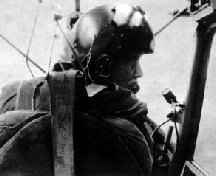 ly a few miles from the Cambodian border.
ly a few miles from the Cambodian border.
The tension spread throughout the crew as the location came in view. Warrant Officer Robert Penix, Reddings, Ca, remarked, "It looks like we have our work cut out for us today."
The spearhead helicopter began to open fire on the snipers. The ship was flying so low the crew could see the weapons in the bunkers and trees as enemy tracer rounds whistled by the aircraft.
Relief spread visibly through the crew when pilot Penix ordered the door gunners to cease-
The seven resupply ships were not so lucky. All took direct hits as they dropped their sling loads over the heavily embattled Paratroopers. Three of them were hit so hard they were almost unserviceable. The others were able to fly back to Dak To. The battered three limped to a nearby fire support base with the injured crewmen.
The seven resuppl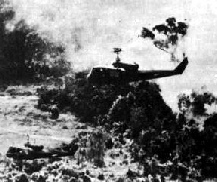 y ships were not so lucky. All took direct hits as they dropped their sling loads over the heavily embattled Paratroopers. Three of them were hit so hard they were almost unserviceable. The others were able to fly back to Dak To. The battered three limped to a nearby fire support base with the injured crewmen.
y ships were not so lucky. All took direct hits as they dropped their sling loads over the heavily embattled Paratroopers. Three of them were hit so hard they were almost unserviceable. The others were able to fly back to Dak To. The battered three limped to a nearby fire support base with the injured crewmen.
A request for a 'Dust-
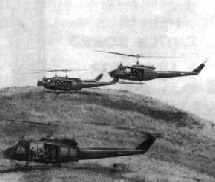 The injured crewmen were lifted to a nearby medical station and the Casper ship continued on its way for another mission in another place, their day was only half over.
The injured crewmen were lifted to a nearby medical station and the Casper ship continued on its way for another mission in another place, their day was only half over.
Most Caspers agree that there is no such thing as a "routine" mission. "Charlie" is too unpredictable and if there is contact, the Command and Control ships are always there.
Specialist 4 Willis D. Smith, Vermont, Ill, said ''I like being where the action is. It makes my job more exciting."
Warrant Officer James W. Sickler, Dallas, Tex., commented, "In this war, a Helicopter Pilot plays a very valuable role, and to do the best job possible he must be flexible. Being a Command and Control ship Pilot, you have to be prepared to conduct many types of missions. Being near the contact gives us that chance more so than other Pilots."
They have supported the "Sky Soldiers" from the Mekong Delta to the Central Highlands. Each crew member could undoubtedly fill several pages with accounts of the courage and dedication shown in its various types of air missions.
Today, ships of the Casper Platoon are on alert 24 hours a day, providing all types of support to ground troops.
Specialist Smith, stated, "We don't always fly the same ship everyday. Sometimes we may change from a Command and Control ship and fly with the "People Sniffer". we usually get our assignments about 10 o'clock at night for the mission the next day, but we are always prepared for a change."
